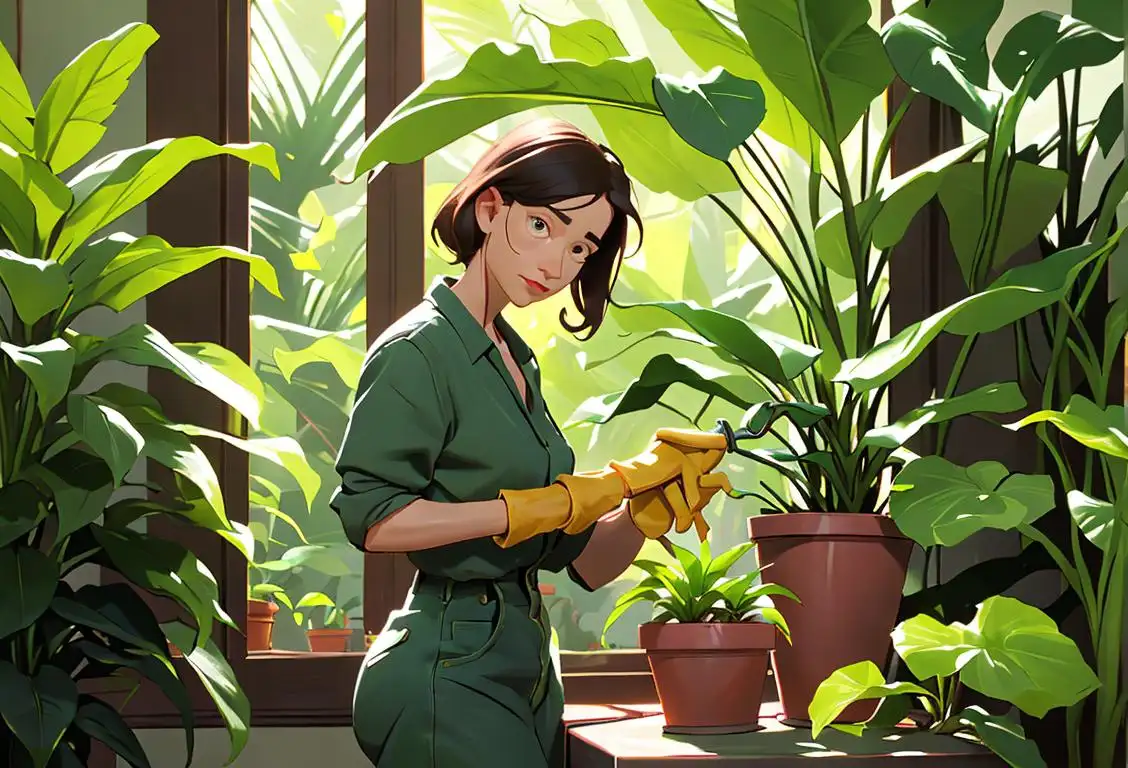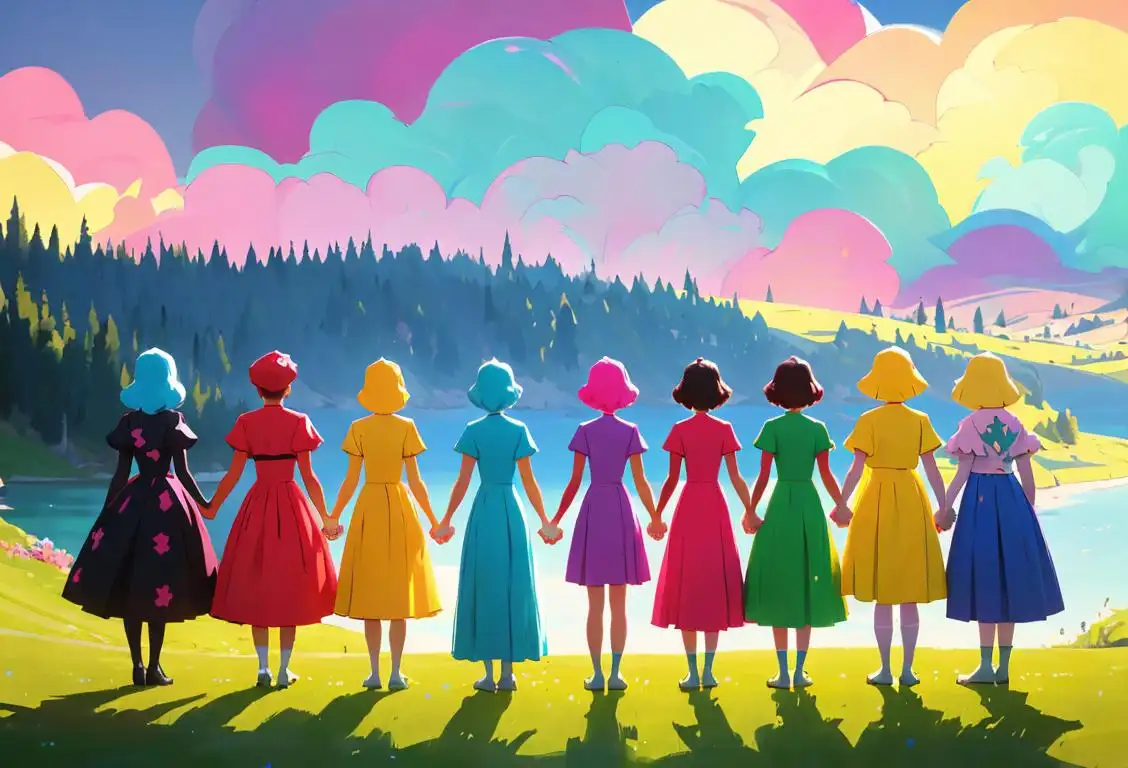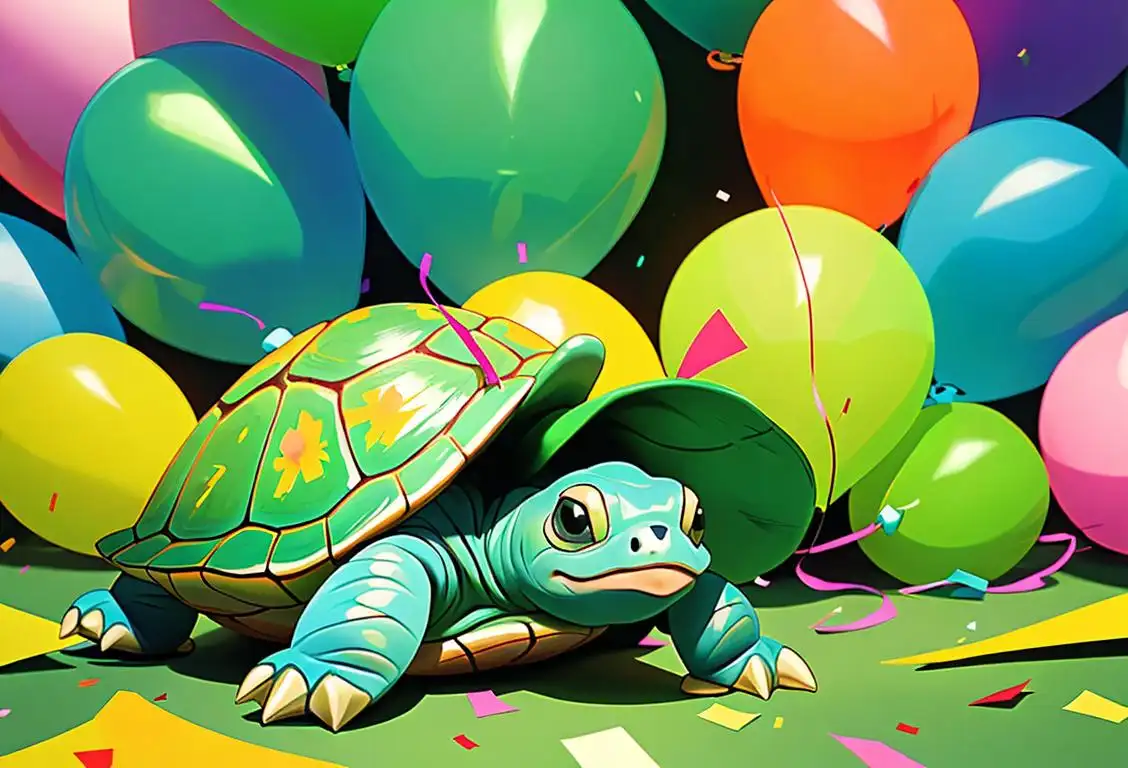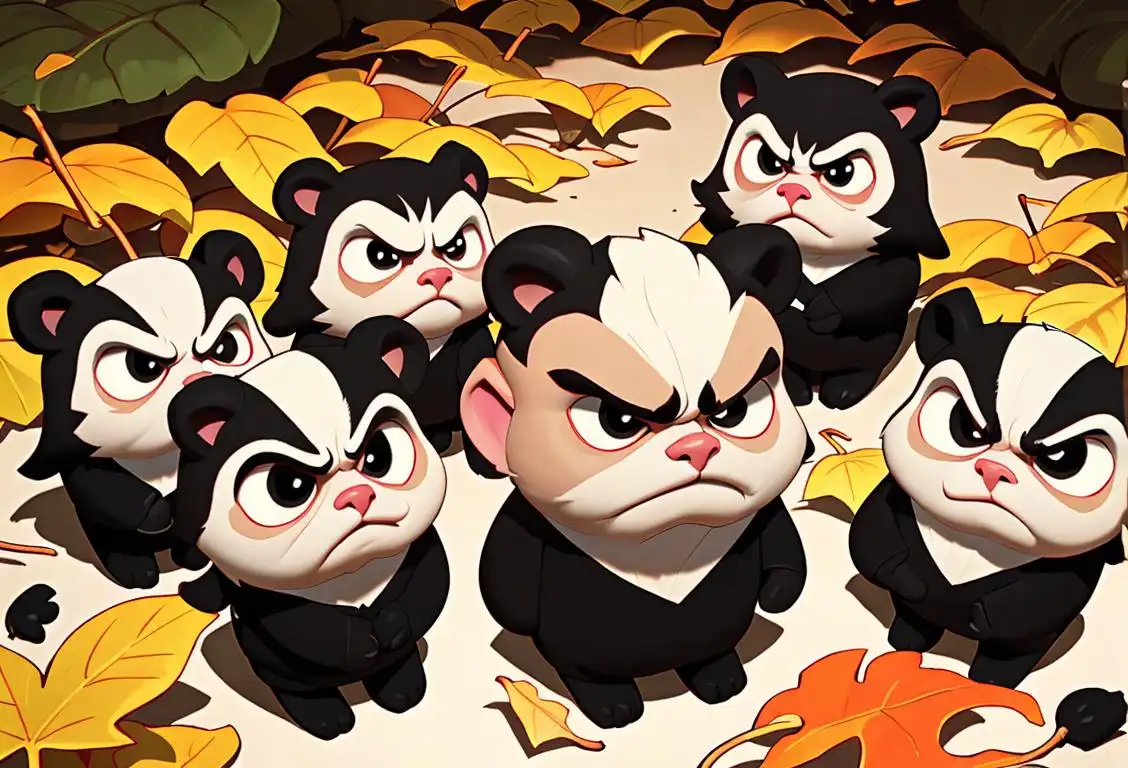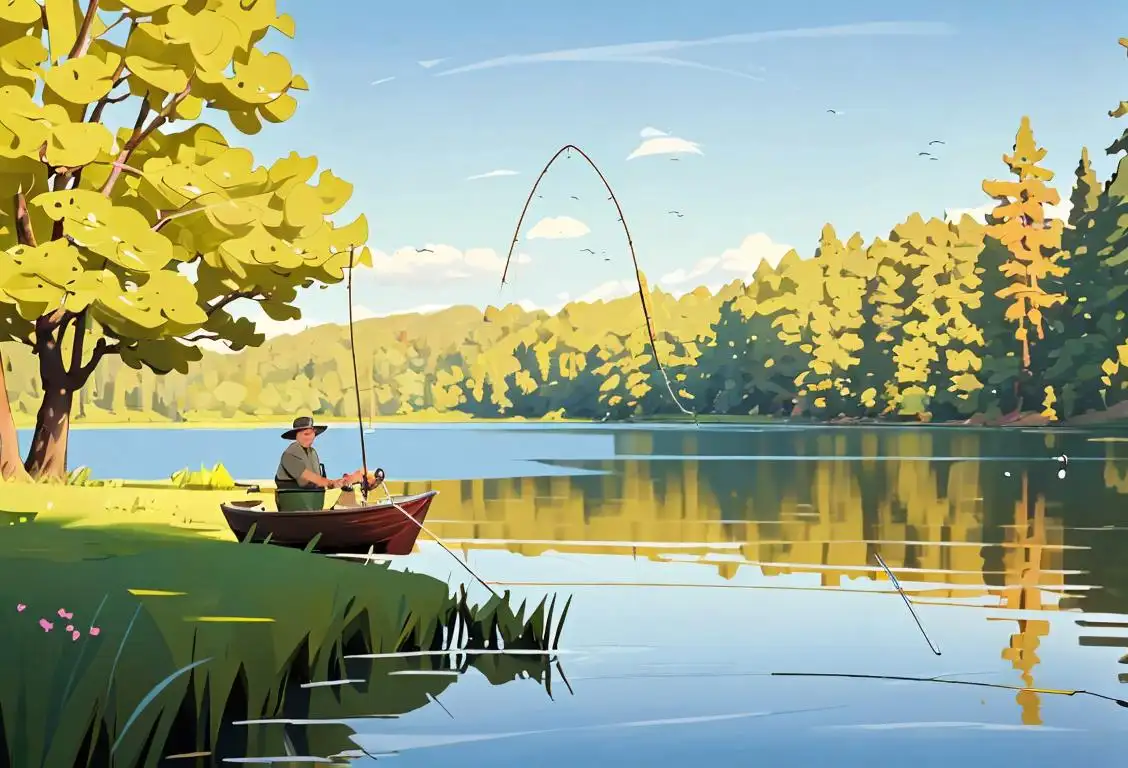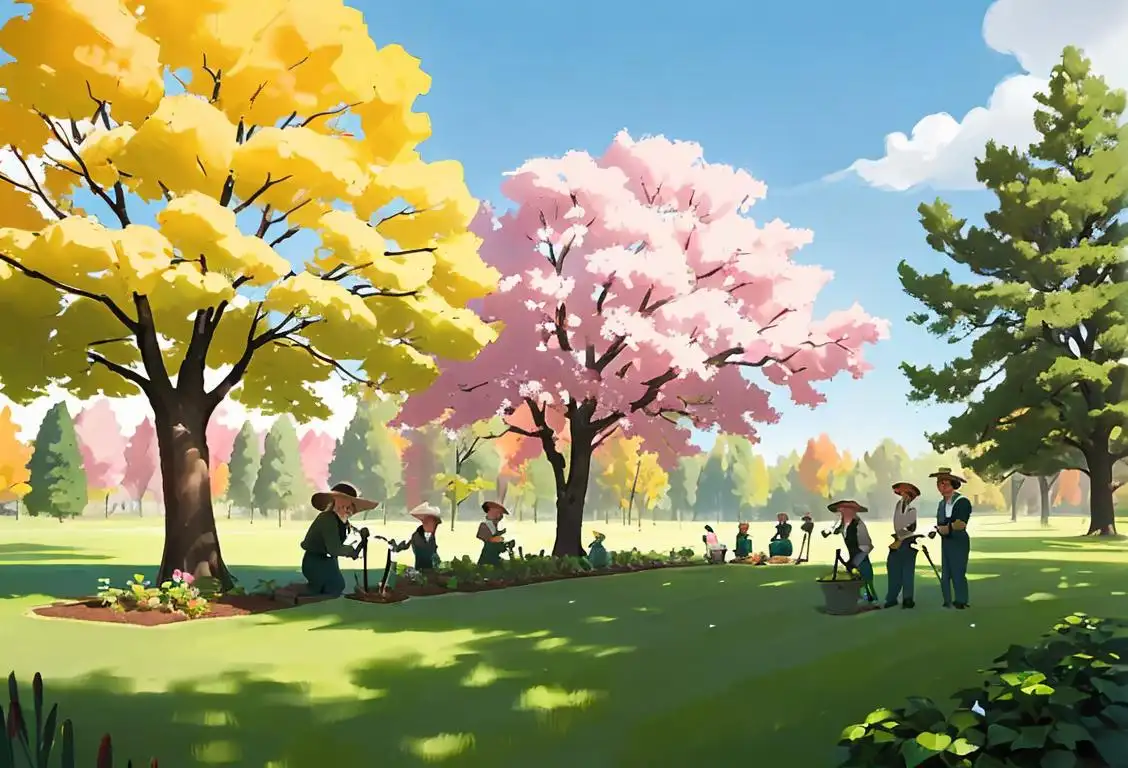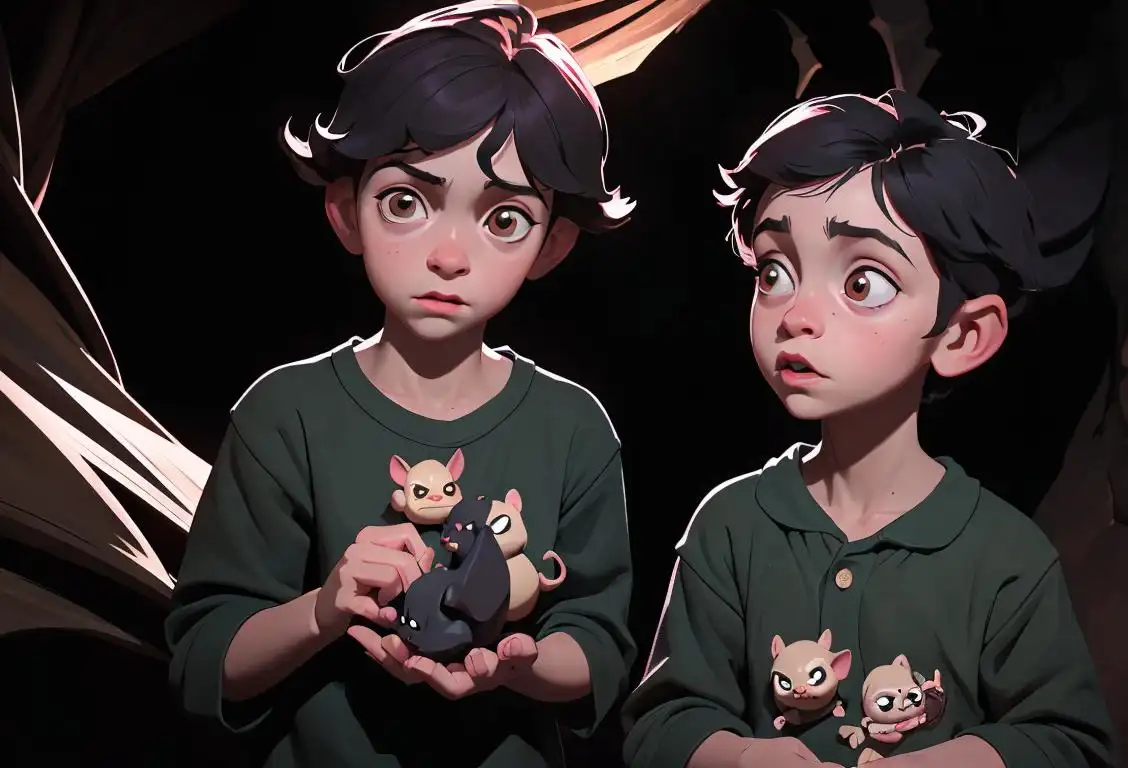National Buy Yourself A New Plant Day
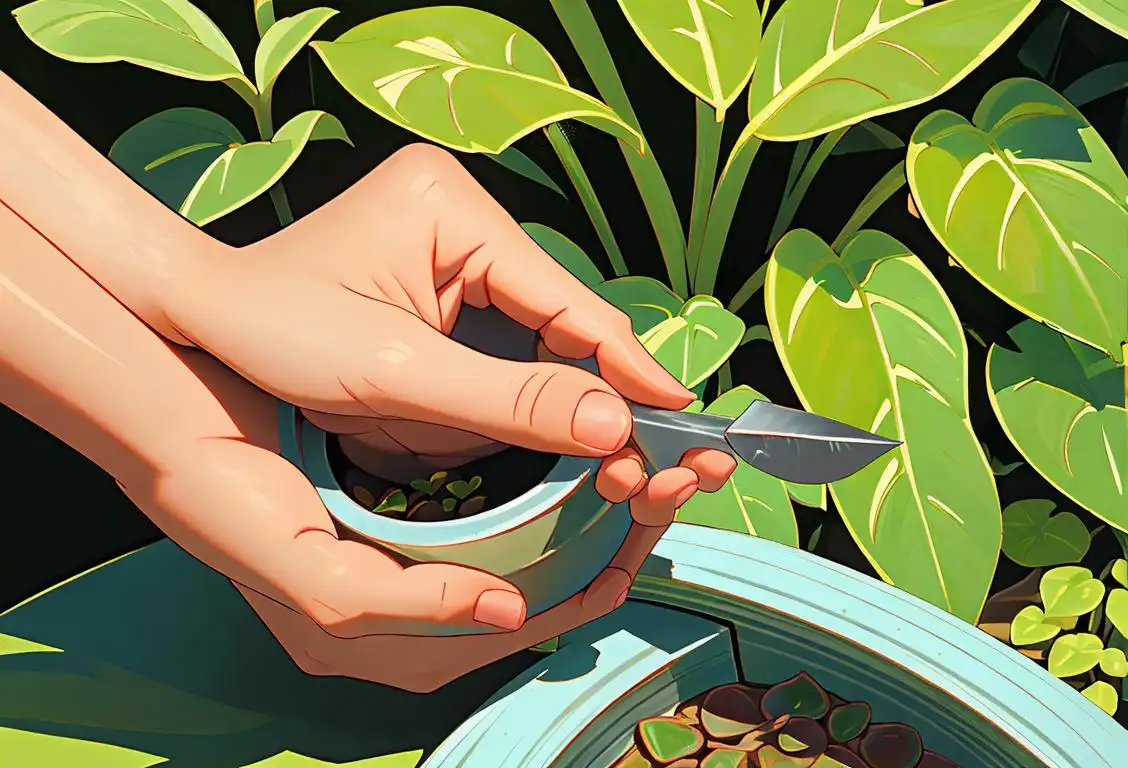
Hey there, plant enthusiasts and green thumbs! Get your gardening gloves ready because it's time to celebrate National Buy Yourself a New Plant Day! This special day is all about treating yourself to a beautiful new plant friend to brighten up your space. Whether you're a seasoned botanist or a newbie to plant parenthood, this is the perfect excuse to expand your green kingdom.
When is Buy Yourself A New Plant Day?
It's national buy yourself a new plant day on the 6th July.
The Internet History of National Buy Yourself a New Plant Day
Although National Buy Yourself a New Plant Day may seem like a recent invention to honor our leafy companions, its roots can be traced back to the early days of the internet. It all started with the rise of social media, where plant lovers from around the world began sharing their plant-filled corners and urban jungles with the hashtag #NewPlantDay.
Seeing the growing enthusiasm for adopting new plants, a group of passionate enthusiasts decided to establish a dedicated day to encourage people to buy themselves a new plant. After much online deliberation (and probably a few debates about the best type of soil), they declared July 6th as National Buy Yourself a New Plant Day.
Since then, this day has blossomed into a beloved celebration of all things green and leafy. From avid collectors expanding their indoor forests to first-time plant parents nervously bringing home their very first succulent, people from all walks of life have embraced this annual botanical bonanza.
How to Celebrate
Ready to join the plant party? Here are a few ways to celebrate National Buy Yourself a New Plant Day:
- Visit a local nursery or garden center and explore their selection of plants. Treat yourself to an eye-catching orchid, a lively fern, or a trendy monstera deliciosa.
- If you're a DIY enthusiast, give propagation a go! Take a cutting from one of your existing plants and watch it develop roots. Before you know it, you'll have a brand new plant to call your own.
- Swap plants with friends or join a local plant exchange event. It's a fantastic way to expand your collection while connecting with other plant-loving folks.
- Don't forget to document your new plant acquisition on social media using the hashtag #NewPlantDay. Share your joy, knowledge, and tips with fellow plant enthusiasts.
- Lastly, give your new plant friend a name! There's something whimsical and endearing about having unique names for your leafy companions.
Did You Know?
Did you know that plants can improve air quality and reduce stress levels? So, by buying yourself a new plant, you're not just adding beauty to your space but also contributing to a healthier and happier environment. Keep those oxygen-producing buddies coming!
History behind the term 'Buy Yourself A New Plant'
1950
The Rise of Houseplants
In the 1950s, a growing fascination with houseplants emerged as people began to appreciate the beauty and benefits of bringing nature indoors. Houseplants were seen as a way to add greenery and life to homes, and they became popular among urban dwellers who lacked access to gardens and outdoor spaces. This marked the beginning of the love affair between people and their indoor plants.
1777
The botany craze
In the late 18th century, the study of botany became a highly popular pursuit. People were fascinated by the diversity and beauty of plants from around the world, and many began to collect and display them in their homes as a sign of their wealth and social status. This period marked the beginning of the botany craze, as more and more people sought to buy and cultivate their own plants.
1782
The birth of the nursery industry
In 1782, the nursery industry was born in England, marking the beginning of a significant cultural shift towards gardening and plant cultivation. The establishment of nurseries led to an increased availability and variety of plants for enthusiasts to purchase.
1850
The rise of indoor plants
In the mid-19th century, there was a growing fascination with indoor plants among the middle and upper classes. The Victorian era saw a surge in the popularity of ornamental houseplants, which were seen as a symbol of wealth and refinement. Wealthy individuals would hire plant hunters to travel the world searching for exotic and rare plant species to showcase in their homes.
1450
The Rise of Botanical Gardens
In the year 1450, the concept of botanical gardens began to gain popularity. These gardens were established to cultivate and study a wide variety of plant species. As wealthier individuals in society sought to display their affluence, they started buying plants to populate their private gardens, leading to a renewed interest in horticulture and plant collection.
1526
Discovery of exotic plants
In the year 1526, European explorers and botanists started venturing out to new lands in search of exotic plants. They discovered a world filled with stunning and unfamiliar plant species, which fascinated them.
1700s
The Rise of Plant Collecting
During the 1700s, botany became a popular field of study. Explorers and naturalists set out on expeditions to discover new plant species in distant lands. This led to the establishment of vast botanical gardens in many countries, where rare and exotic plants were cultivated. The enthusiasm for collecting plants grew, with people dedicating their time and resources to building impressive personal plant collections.
1847
The Seedling Obsession
In 1847, a growing interest in botany and horticulture emerged as people began to appreciate the beauty and benefits of plants. As urbanization increased and people moved away from rural areas, they longed to bring nature into their homes. Gardening became a popular hobby, and nurturing plants from seeds became a fascination for many. This fascination with seedlings laid the foundation for the concept of buying oneself a new plant.
1900
The rise of houseplant popularity
In the early 1900s, houseplants began to gain popularity as a way to bring a touch of nature indoors. People started to recognize the benefits of having plants in their homes, both for aesthetic reasons and for their ability to improve air quality. Houseplants became a symbol of good taste and were often used to decorate living spaces.
1950
The emergence of consumer culture
In the 1950s, consumer culture started to take hold in many societies. With the post-war economic boom, people had more disposable income and were encouraged to spend it on material possessions. The concept of 'buying yourself a new plant' started to emerge as a way to indulge in the growing desire for acquiring new things, even if they were small, affordable items like plants.
1771
Establishment of botanical gardens
In 1771, the world's first botanical garden, the Botanical Garden of Padua, was established in Italy. These gardens were created to study and display an extensive collection of plants gathered from various parts of the world.
1840
The rise of horticultural societies
In the mid-19th century, horticultural societies began to flourish. These societies were dedicated to the study and cultivation of plants, and they provided a platform for plant enthusiasts to share their knowledge and passion. As these societies grew in popularity, the idea of buying a new plant for oneself started to gain traction. It became a way for individuals to support these societies and contribute to the advancement of botany.
1970
The Plant Parenting Trend
By the 1970s, the plant parenting trend started to gain momentum. People began to view their houseplants as more than just decorative items; they saw them as living beings that required care and attention. This shift in perspective led to the rise of plant care guides, plant-themed magazines, and the exchange of plant care tips among enthusiasts. The term 'buy yourself a new plant' started to gain popularity as a lighthearted suggestion to treat oneself to a new leafy companion.
1920
The mass availability of potted plants
By the early 20th century, advancements in plant propagation techniques, such as cloning through cuttings and grafting, led to the mass production of potted plants. This allowed for the wider availability of houseplants at affordable prices. Potted plants became more accessible to the general population, enabling people of all socio-economic backgrounds to bring greenery into their homes.
1892
The Rise of Nurseries
By 1892, the establishment of nurseries became more widespread, providing a convenient marketplace for plant enthusiasts to browse and purchase various plant species. These nurseries offered a diverse range of plants, from delicate flowers to exotic tropical plants, catering to the growing demand for greenery. As more people became aware of these nurseries, buying oneself a new plant became a popular trend among plant lovers.
1827
Introduction of the Wardian Case
The year 1827 witnessed an important innovation in gardening called the Wardian Case, invented by Nathaniel Bagshaw Ward. This portable greenhouse allowed plants to be transported long distances without damage or spoilage. This invention revolutionized the horticulture industry by enabling the trade of exotic plants on a global scale. Many plant enthusiasts began buying new and unique plant species, contributing to the growing popularity of owning plants.
1850
Interest in indoor gardening grows
Around the year 1850, there was a growing interest in indoor gardening as people increasingly sought to bring nature into their homes. This trend led to a surge in the demand for houseplants, creating a market for individuals to buy plants for their personal enjoyment and to enhance their living spaces.
1800s
The Growth of Horticulture
In the 1800s, horticulture gained significant momentum. As more people became interested in gardening and plant cultivation, plant nurseries started springing up. These nurseries provided a wide variety of plants, making them accessible to enthusiasts worldwide. Gardening became a popular hobby, and people started to decorate their homes and gardens with an assortment of plants, creating vibrant and colorful landscapes.
1910
Greening the urban landscape
By the early 20th century, urbanization had led to a significant loss of green spaces in cities. As a response, efforts were made to bring more greenery into urban areas. This movement gained momentum with the establishment of urban parks and the encouragement of individuals to buy and plant trees and flowering plants in their own yards. The idea of buying oneself a new plant became associated with beautifying one's surroundings and improving the urban environment.
1920
The rise of urbanization and houseplant popularity
In the 1920s, urbanization was at its peak, and more people were living in apartments or small city homes lacking gardens. Houseplants became popular as a way for urban dwellers to bring a touch of greenery into their urban environments. Buying oneself a new plant became a means of connecting with nature and brightening up living spaces in the midst of a bustling city.
1950
The Surge of Houseplants
By the mid-20th century, the increasing urbanization and modernization of society led to a surge in the popularity of houseplants. As people moved into apartments and homes without ample outdoor space, indoor gardening became a way to bring nature indoors. Buying and caring for houseplants became a trendy activity, with people actively seeking out new plants to add to their living spaces.
1842
Introduction of potted houseplants
By 1842, advancements in horticulture and transportation allowed for the introduction of potted houseplants. Individuals could now keep plants in their homes, bringing nature indoors and enhancing the beauty of their living spaces.
2000
The rise of self-care and wellness trends
In the 21st century, self-care and wellness became increasingly popular. The concept of taking care of oneself emotionally and physically gained prominence. Houseplants, with their calming and therapeutic effects, became a symbol of self-care. 'Buy yourself a new plant' started to be used as a reminder to invest in personal well-being and to create a nurturing environment at home.
1960
The environmental movement
In the 1960s, the environmental movement gained momentum, leading to increased awareness about the importance of nature conservation. This awareness extended to individuals' living spaces, and the concept of 'bringing nature indoors' gained popularity. Houseplants were recognized for their ability to improve indoor air quality, reduce stress, and enhance overall well-being, leading to a surge in their adoption.
1930
Retail Garden Centers Take Root
In 1930, retail garden centers started to flourish, offering not only plants but also gardening supplies, tools, and expert advice. This marked a shift in the plant-buying experience, as these centers became hubs of plant enthusiasts and provided a holistic approach to gardening. People could now easily access a wide selection of plants and expert knowledge, making the act of buying oneself a new plant an essential part of the gardening journey.
1920s
Houseplant Trend Takes Root
The 1920s witnessed the rise of the houseplant trend. Interior design styles incorporated the use of potted plants to bring nature indoors. Homeowners sought to create a harmonious living environment and embraced the idea of adding greenery to their spaces. Houseplant sales soared as people found joy in tending to their indoor gardens, which also became a status symbol among the upper class.
1995
The Growing Online Plant Market
With the advent of the internet in the 1990s, the plant market underwent a significant transformation. Online plant nurseries and retailers emerged, offering a wide variety of plants for purchase and delivery. This made it easier than ever for plant enthusiasts to explore and expand their collections. 'Buy yourself a new plant' became a catchphrase used in online plant communities, reminding people to indulge in their love for plants and discover new additions to their homes.
2000
The emergence of plant parenting
In the early 21st century, a new trend emerged known as 'plant parenting.' This term refers to the practice of nurturing and caring for plants as if they were one's own children. Plant parents formed online communities, sharing their experiences and knowledge on plant care. The trend was driven by millennials seeking a sense of fulfillment and companionship through plant ownership, and it quickly spread through social media platforms.
1870
Rising popularity of houseplants
During the late 19th century, the Victorian era saw a surge in the popularity of houseplants. The Victorians viewed plants as a symbol of wealth, health, and refinement, leading to a widespread interest in collecting and caring for plants.
2020
Buy Yourself a New Plant Day
In recent years, the concept of National Buy Yourself a New Plant Day emerged as a way to celebrate the joy and benefits of owning plants. Celebrated annually on the 28th of May, this day encourages individuals to indulge in the practice of buying themselves a new plant. It serves as a reminder to appreciate nature, enhance indoor aesthetics, and experience the therapeutic effects of nurturing plants. This day has gained popularity among plant enthusiasts and has become an exciting event to discover and acquire new plant species.
2008
Social Media and Plant Hauls
The rise of social media platforms like Instagram and YouTube in the late 2000s brought about a new wave of plant obsession. Plant enthusiasts began sharing their plant collections, propagation successes, and plant hauls online, sparking envy and admiration among fellow plant lovers. 'Buy yourself a new plant' became a popular hashtag and caption, encouraging others to join in the excitement of expanding their green havens.
1980s
Revival of Houseplant Enthusiasm
After a slight decline in popularity, houseplants experienced a resurgence in the 1980s. This revival was fueled by a growing interest in environmental conservation and an increased understanding of the air-purifying qualities of certain plants. As people became more conscious of the benefits of indoor plants, a new wave of houseplant lovers emerged, sparking a renewed passion for bringing greenery into homes and offices.
1970
Rise of the modern houseplant trend
In the 1970s, the modern houseplant trend took off. As people became more interested in interior design and creating inviting living spaces, houseplants gained popularity as a way to add a touch of nature and vitality indoors. This trend was fueled by the introduction of low-maintenance houseplants, which made it easier for people to buy and care for plants. Buying oneself a new plant became a symbol of embracing the nature inside and creating a cozy living environment.
2020
The boom of plant parenthood
In recent years, a new trend known as 'plant parenthood' has gained momentum. More and more people have embraced the idea of nurturing and caring for their plants as if they were their own children. 'Buy yourself a new plant' has become a mantra for plant enthusiasts to continue expanding their plant family and to indulge in the joy of growing and tending to plants.
1970
The 'green thumb' movement
During the 1970s, the 'green thumb' movement gained momentum, fueled by a growing awareness of the benefits of plants for mental well-being and air purification. People started encouraging each other to buy themselves new plants as a way to promote a healthier and more eco-friendly lifestyle.
1970
Houseplant Boom
The 1970s witnessed a surge in the popularity of houseplants. As interior design trends embraced the concept of bringing nature indoors, houseplants became an integral part of home decor. The presence of greenery not only added aesthetic appeal but also improved indoor air quality. Buying oneself a new plant evolved into a popular practice as people sought to beautify their living spaces and reap the health benefits of houseplants.
2020
Social media and plant parenting
With the rise of social media and the popularity of platforms like Instagram, the trend of buying oneself a new plant has been revitalized. Millennials and Gen Z, in particular, have embraced houseplants as part of their lifestyle, with the term 'plant parenting' becoming a common phrase. Taking care of plants and sharing their growth online has become a way for individuals to express their creativity, nurture their well-being, and build a sense of community around their shared love for foliage.
1960s
Plant-loving counterculture movement
In the 1960s, a counterculture movement emerged, emphasizing environmentalism and a connection with nature. This movement, in part, led to the increased interest in houseplants. It became a way of expressing one's love for the environment and nurturing a green thumb.
2021
The Memeification of 'Buy Yourself a New Plant'
In recent years, 'buy yourself a new plant' has transcended its original meaning and has become a meme. The phrase is often used humorously to depict the seemingly insatiable desire of plant enthusiasts to acquire more and more plants. Memes featuring 'buy yourself a new plant' provide a comical representation of the addictive nature of plant collecting and the joy it brings to many. It continues to be a playful reminder for both seasoned and aspiring plant parents to nurture their green companions and add to their ever-growing plant families.
Present Day
Buy Yourself a New Plant Day
Buy Yourself a New Plant Day was established to celebrate the joy and benefits of owning plants. It encourages individuals to expand their plant collection, bringing more greenery into their lives. This day, observed on May 19th each year, serves as a reminder to appreciate the beauty of plants and the positive impact they have on our well-being.
Present
The Rise of Plant Parenthood
Today, the term 'buy yourself a new plant' symbolizes more than just a simple purchase. It reflects the emotional connection people have developed with plants, often referring to them as their 'plant babies' or 'green companions.' Plant parenthood has become a global movement, with plant enthusiasts bonding over plant care tips, rare finds, and the joy of watching their plants grow. Buying oneself a new plant has turned into an act of self-care, nurturing, and cultivating a deeper connection with nature.
2021
Buy yourself a new plant day
In recent years, the popularity of houseplants has continued to soar, with more and more people embracing plant ownership. On May 19th, 2021, 'Buy Yourself a New Plant Day' was established as a fun and lighthearted way to celebrate the joy and benefits of having plants in our lives. It encourages people to indulge in their love for plants and add a new leafy companion to their homes.
2020
Buy yourself a new plant
In recent years, taking care of houseplants has become a popular form of self-care and an expression of personal style. 'Buy yourself a new plant' has become a playful phrase encouraging people to indulge in the joy of adding new greenery to their living spaces, fostering a sense of well-being and connection with nature.
Did you know?
Did you know that plants can improve air quality and reduce stress levels?Tagged
fun nature self-care homeFirst identified
6th July 2020Most mentioned on
6th July 2020Total mentions
4Other days
Buy Yourself A New Plant Day
House Plant Day
Mental Health Day
Lash Day
Turtle Day
Badger Day
Hunting And Fishing Day
Public Lands Day
Tree Planting Day
Bat Appreciation Day
